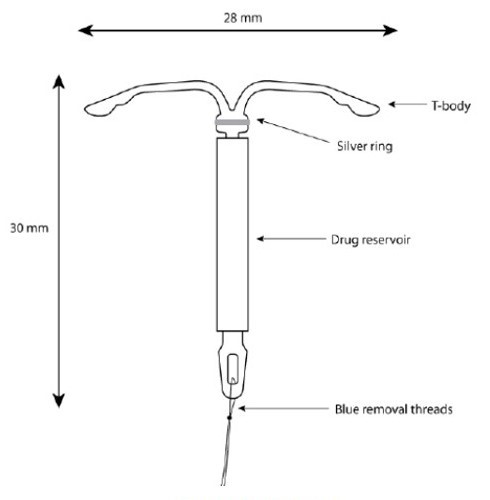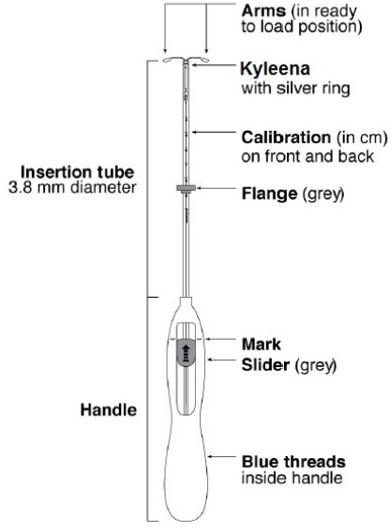Kyleena – IUD
Kyleena is an intrauterine device (IUD) that is designed for birth control. It contains the hormone levonorgestrel. The hormone is continuously released into the uterus in small amounts. If after a doctor inserts the IUD into the uterus, and a woman has severe pain then she should return to the doctor to determine if there’s a problem.
Over time, the levonorgestrel thins the uterus, and one’s periods can become irregular. The hormone Levonorgestrel is commonly used in Birth Control Pills, and as such, is designed to work by:
- Thinning the lining of the uterus (so that implantation of a live embryo is very unlikely).
- Killing sperm before fertilization.
- Increasing cervical mucus to prevent sperm from reaching the egg.
The device looks like this (but is smaller than the image):

A doctor inserts the device by using an insertion tube that has a handle. See below:

If after the doctor inserts the IUD, you have severe pain in the following day or two, then contact a health care provider immediately. It could be a strep infection, which can be serious.
Precautions
Kyleena should be removed, if a pregnancy occurs when Kyleena is in place. Those who get pregnant when Kyleena is in them, may have an ectopic pregnancy, which is a serious condition that requires surgery.
Only get an MRI test done if the following conditions are met:
- Static magnetic field of 3.0 T or less
- Maximum spatial field gradient of 36,000 gauss/cm (360 T/m)
- Maximum MR system reported, whole body averaged specific absorption rate (SAR) of 4W/kg (First Level Controlled Operating Mode)
Ovarian cysts may occur. About one in ten women get an ovarian cyst in the first year after having an IUD inserted in them.
Note: Information on this website is intended to supplement, not substitute for the knowledge of your doctor, or other health care provider.
